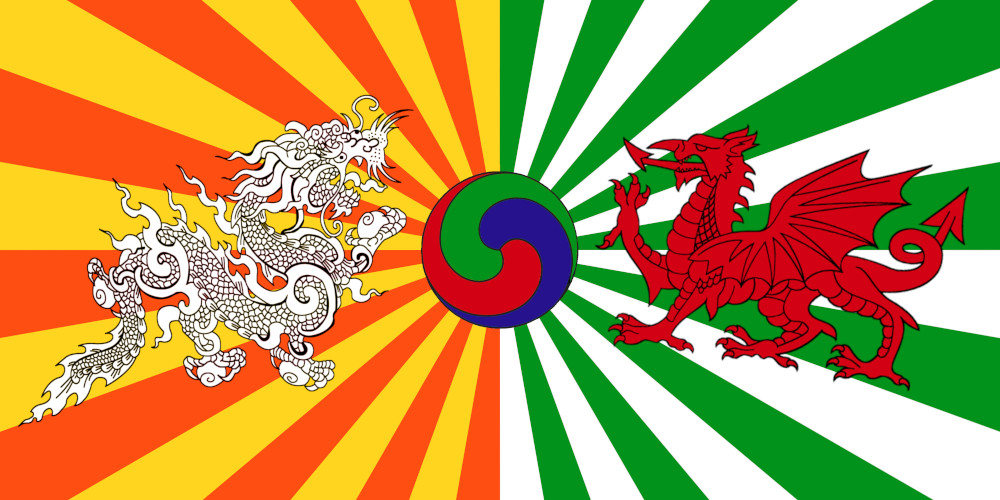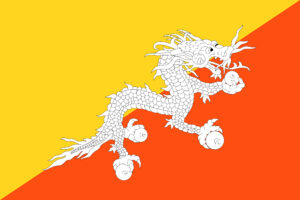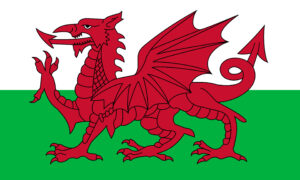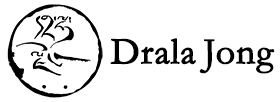A flag for Drala Jong
Flags play an important rôle in Vajrayana Buddhism. Many Buddhist Most different lineages and also many monastaries in Tibet have their own flags, each one with a highly particular symbolism. Most well known in the west are perhaps the different flags used in the Shambhala tradition by Chögyam Trungpa Rinpoche.
This is the flag which has been specially created for Drala Jong.

Dragons
The flag is a combination of the Welsh flag featuring the red dragon (Y Ddraig Goch) and the Flag of Bhutan which is also known as Druk Yul, the dragon country. Dragons can be found both in European and Far East Asian mythology, but while in Europe the dragon is often demonic and needs to be slain by the hero, in the Tibetan tradition the dragon is a creature of great creative power. Within the Aro gTér the dragon is one of the 12 astrological animals and one of the 6 animals in the sKu-mNyé, a cycle of psycho-physical exercises from Dzogchen Long-dé.

Flag of Bhutan

Flag of Wales
It is delightful that the symbol of the dragon plays such a prominent rôle in these two countries, which are both important for the Aro gTér tradition. The lineage holders Ngak’chang Rinpoche and Khandro Déchen, as well as many of their students, live in Wales and of course Drala Jong itself is located in Carmarthenshire. In Bhutan on the other hand we have strong connections with many Lamas, among them Dudjom Tenzin Yeshé Dorje, one of the current incarnations of Kyabjé Dudjom Jigdral Yeshé Dorje who was the Tsawa’i Lama of Ngak’chang Rinpoche. In 2019 Ngak’chang Rinpoche and Khandro Déchen were able to meet him while on a pilgrimage in Bhutan with a group of their students. On that same pilgrimage they also met Garab Dorje Rinpoche, Kyabjé Tang Rinpoche, and many other significant figures. They have a close friendship with gTértön Drukdra and his father Wangchuk Rin’dzin Rinpoche.

Creativity
Donate to Drala Jong
Please act today, and donate a lump sum or establish a standing order for a monthly contribution. No matter how small or big – we are utterly grateful for every donation.

